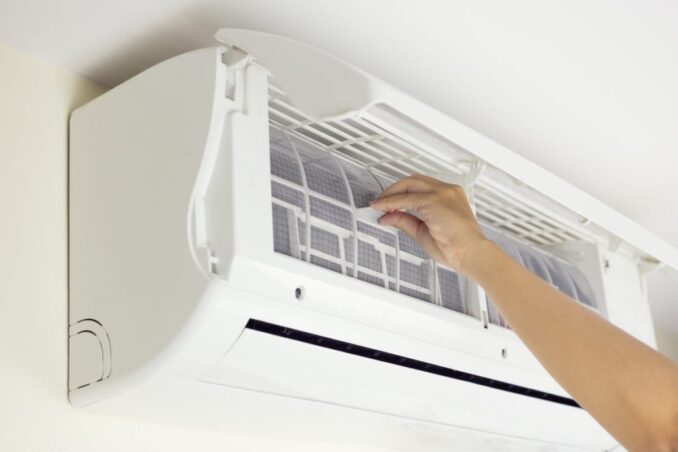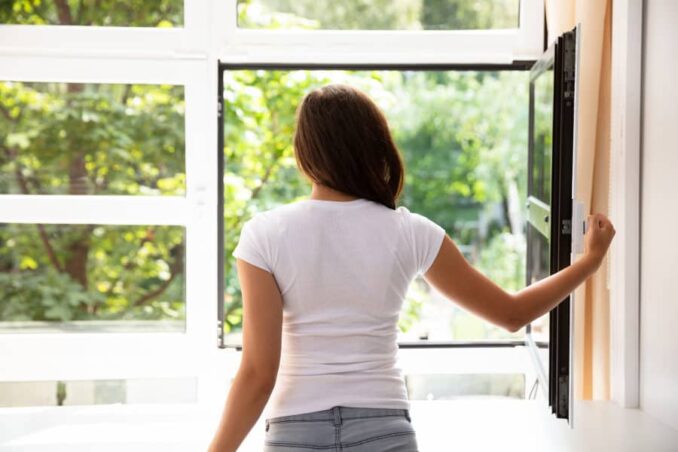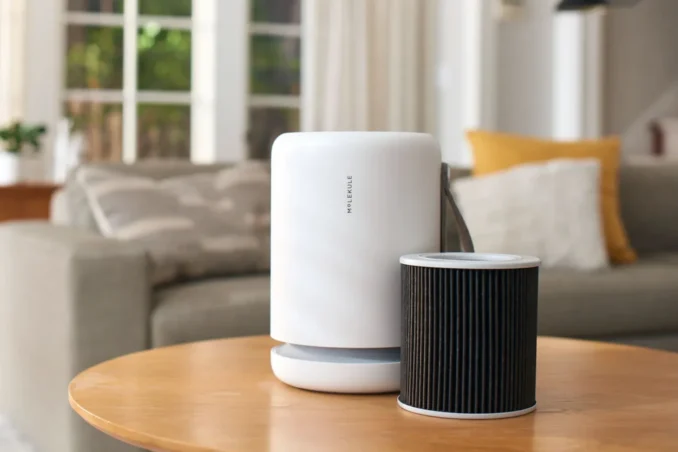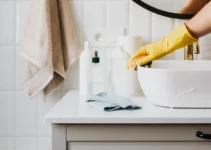The indoor air quality is often more polluted than the outdoor air since the average person spends 90% of their time inside the house. Poor indoor quality can compromise your family’s health and result in illnesses such as asthma, cancer, heart diseases, allergic reactions, and pneumonia. According to UK government research, of the 400,00 annual deaths caused by air pollution, 9,000 results from indoor air pollution. Read on for eight ways to enhance your home’s indoor air quality to reduce the risk of contracting health complications and improve the quality of your life.
1. Eliminate the air pollutants

Source:homebiotesting.com
The first step to improving the air quality inside your home is removing anything that could be causing the air to degrade. Some common indoor air pollutants include:
a) Formaldehyde
These are volatile organic compounds (VOCs) often emitted by household items, including furniture and glue in composite wood. Excessive exposure to formaldehyde could result in respiratory problems such as bronchitis. To reduce formaldehyde, invest in solid wood instead of composite wood furniture. You could also pick second-hand furniture over new ones as they often produce less formaldehyde.
b) Radon
This is a radioactive natural gas that enters your home via cracks in your build-up or the earth and could cause health complications such as lung cancer. Use home test kits to determine the harmful radon levels inside your house. If you notice high gas levels, seal your home’s foundation to keep radon from leaking into your living space.
c) Secondhand smoke
This is the exhaled cigarette smoke. Exposure to secondhand smoke increases the risk of suffering from specific cancer types. Consider smoking outside to eliminate secondhand smoke. It is also an excellent idea to quit smoking altogether because even when you smoke outside, you could compromise the indoor air quality via thirdhand smoke found on your clothes.
d) Cleaning products
Certain cleaning products, including bleach, air fresheners, glass cleaners, and cleaning sprays, contain dangerous chemicals that compromise your home’s air quality. Be sure to invest in safe, non-toxic products that keep your house clean.
2. Replace the HVAC filters

Source:youtube.com
The air conditioning system operates year-round to provide ideal temperatures for your living space. As the HVAC system cycles through the air, it also filters air pollutants such as dust, debris, dirt, carbon, and pet dander. Over time, these pollutants accumulate in the air filters and clog the units. This prevents the filters from performing their intended function, compromising the air quality inside your home.
Clogged AC filters also wear down the heating and cooling system, leading to frequent calls to your contractor like osicomfort.com for repairs, which can be expensive. Filthy filters also make the air conditioning system work harder to regulate indoor temperatures, causing a spike in the electricity bill. Consider cleaning and changing the AC filters every three months and more frequently if you are allergic or own pets to boost the indoor air quality.
3. Open your windows and doors

Source:homelyville.com
Keeping the windows and doors open is an easy and affordable way to boost air quality inside your living space. Open windows and doors let fresh air inside the house while reducing contaminants. They also minimize the humidity levels that provide ideal conditions for dust mites to thrive. However, ensure that you turn off the air conditioning system before opening doors and windows, especially in winter. Warm air often escapes the house when doors and windows are open, which could trick the AC into thinking the house needs more cooling. The air conditioner will work harder to maintain ideal temperatures, spiking the electricity expenses.
4. Keep the house clean
Keeping your home clean improves the air quality by minimizing the accumulation of dust, debris, mold, and pet dander. To keep the house clean, you should:
- Vacuum the home regularly. Be sure to pay extra attention to area rugs and carpets to reduce allergens
- Clear clutter to avoid holding or trapping dust which could trigger allergic reactions
- Deep clean beddings and drapes, among other items that harbor allergens, especially if you have pets
5. Invest in air purifiers

Source:seattletimes.com
If you have allergies but don’t wish to give up your pets, consider installing an air purifier. Air purifiers draw contaminated air from your house, filter it, and then release it back into the atmosphere, making your living space cleaner and fresher. Be sure to purchase an air purifier with High-Efficiency Particulate Absorbing (HEPA) ratings, as they are excellent for eliminating harmful particles including carbon monoxide, allergens, mold spores, VOCs, and smoke from the indoor air.
6. Minimize dampness
Damp indoor spaces facilitate mold growth and cause VOCs to multiply in the atmosphere. A high humidity level also results in respiratory issues such as asthma attacks, wheezing, and coughing. Dampness provides an ideal environment for fleas, dust mites, cloth moths, and cockroaches to breed. To minimize moisture, consider:
- Investing in dehumidifiers
- Opening the windows or switching on the fan when cooking or taking a shower
- Not hanging wet clothes inside the house
- Identifying and removing moisture and standing water from your house
7. Utilize cooking vents
The kitchen produces most of the indoor air contaminants. The electric burner and gas stove release harmful particles such as nitrogen and carbon dioxide when cooking. Carbon monoxide and nitrogen dioxide are easily absorbed into the bloodstream and can cause severe health issues and death. Be sure to turn the kitchen vents on and keep the windows open when cooking to filter the air.
8. Choose non-toxic paint
Most people prioritize the desired appearance and color when buying paint. However, checking the ingredients before purchasing paint is crucial to ensure they are not toxic. Avoid picking paint with plastic as it creates barriers that trap air, resulting in mold development on the painted surfaces. You should also opt for paints with ‘Low VOC’ or ‘Zero VOC’ labels to minimize the harmful chemicals.
Endnote

Source:trusens.com
The indoor air quality has a significant impact on the health and comfort of your family. Remove air pollutants, replace the AC filter, keep windows and doors open, use cooking vents, purchase non-toxic paint, invest in air purifiers, and keep your house clean to improve indoor air quality and reduce health risks.





